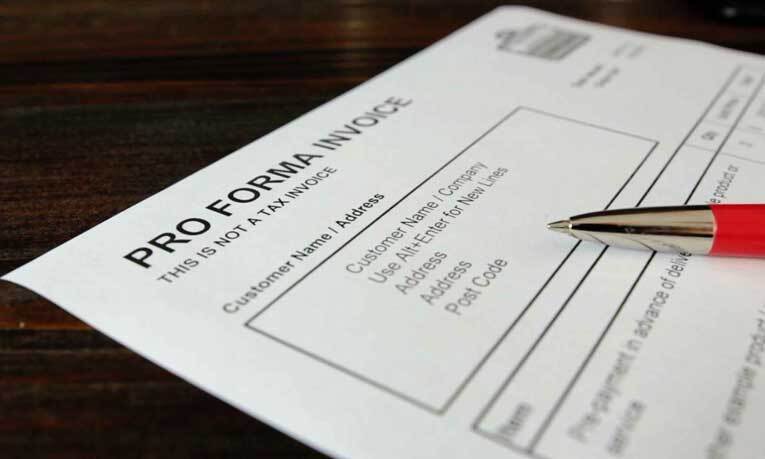What is a proforma invoice?
16 Jan 2020

Invoices are an integral part of business - without them, you don’t get paid. We recently wrote a detailed guide to creating a regular invoice (you can read it here), but have you heard of a proforma invoice?
This article covers
What is a proforma invoice?
A proforma invoice is a hybrid of an invoice and a quote. Just like a quote, it acts as a preliminary bill of sale and highlights the intent to deliver a product or service for a specified price.
A proforma invoice is sent before a sale has been finalised. This means it’s not technically classed as a “proper” invoice and is therefore not legally binding like regular business invoices.
Unlike regular invoices, proforma invoices don’t feature a unique invoice number. On top of this, they don’t have a fiscal value so are not and cannot be included in accounting records or tax returns.
A proforma invoice provides an indication of the final invoice total, but it can be adjusted if necessary. Once it’s been updated, it can be converted into a regular invoice simply by changing the title to ‘invoice’ and by adding an invoice number.
Isn’t a proforma invoice just a quote?
A lot of people mistake a quote for a proforma invoice and vice versa. And, while they are very similar, there are a couple of notable differences.
It’s important to note here that neither are legal documents, however quotes tend to be more casual and are usually sent during the early stages of the sales process to indicate a potential price for a piece of work or product.
On the other hand, a proforma invoice tends to be issued further down the line, usually when the supply of a service or product has been agreed on.
Why use a proforma invoice?
You might be sitting there thinking why you would possibly need to use a proforma invoice if you can just use a quote at the start of the sales cycle and a regular invoice at the end.
However, there are plenty of arguments in favour of proforma invoices. For starters, they help streamline the sales process and ensure that customers agree on a final price before proceedings begin.
With a proforma invoice, everything is agreed upfront, which is particularly useful if you don’t have all the details for a regular invoice.
This helps strengthen customer experience as customers know exactly what to expect and are less likely to be surprised when a regular invoice lands in their lap.
On top of this, some businesses ask for a proforma invoice for internal purchase approval so that their decisions can be approved by senior members of staff, and others use them to request payment in advance of goods or services being delivered.
This helps them avoid no-payment situations before a product or service has been carried out or delivered.
What goes into a proforma invoice
Most proforma invoices look pretty much like regular invoices. While there’s no standard layout to draw from, it’s best to keep your proforma invoices looking as similar as possible to the final invoice - just without the invoice number and clearly titled ‘proforma invoice’.
To simplify the process, you can use accounting software to create your proforma invoices.
Make your sales process slick with proforma invoices
Proforma invoices, while not mandatory in business, help make the sales process much slicker.
They can help manage customer expectations and avoid nasty surprises once the product or service has been delivered.


